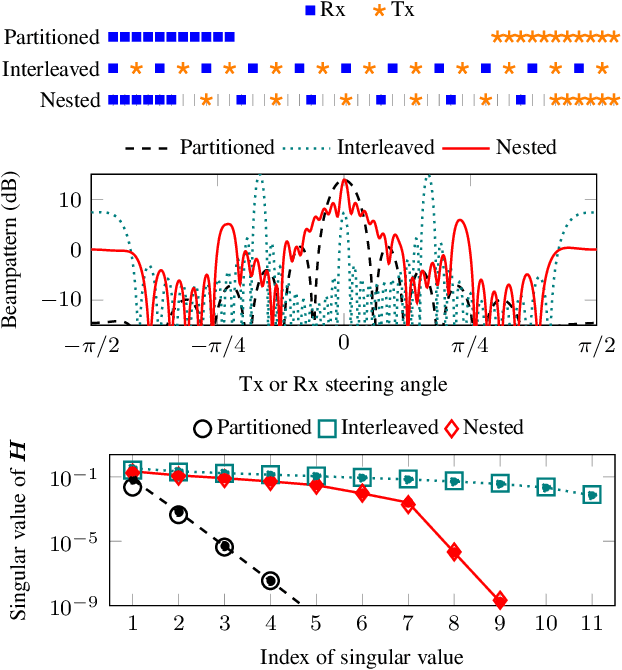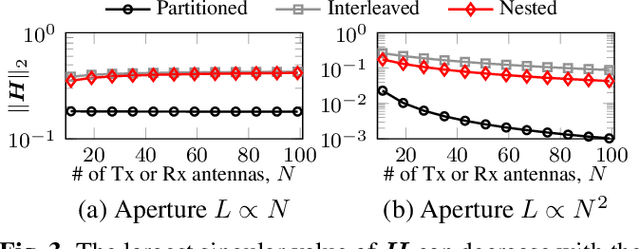On array geometry and self-interference in full-duplex massive MIMO communications
Paper and Code
Jan 12, 2024


This paper studies the role of the joint transmit-receive antenna array geometry in shaping the self-interference (SI) channel in full-duplex communications. We consider a simple spherical wave SI model and two prototypical linear array geometries with uniformly spaced transmit and receive antennas. We show that the resulting SI channel matrix has a regular (Toeplitz) structure in both of these cases. However, the number of significant singular values of these matrices - an indication of the severity of SI - can be markedly different. We demonstrate that both reduced SI and high angular resolution can be obtained by employing suitable sparse array configurations that fully leverage the available joint transmit-receive array aperture without suffering from angular ambiguities. Numerical electromagnetic simulations also suggest that the worst-case SI of such sparse arrays need not increase - but can actually decrease - with the number of antennas. Our findings provide preliminary insight into the extent to which the array geometry alone can mitigate SI in full-duplex massive MIMO communications systems employing a large number of antennas.
 Add to Chrome
Add to Chrome Add to Firefox
Add to Firefox Add to Edge
Add to Edge